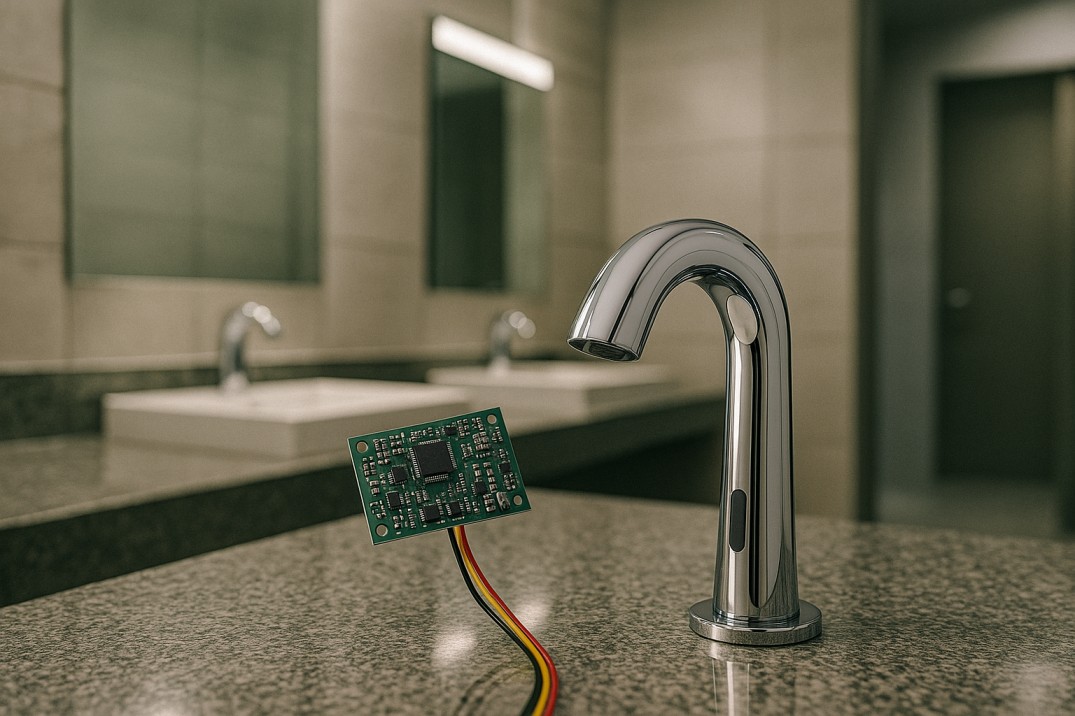Introduction
In the context of smart homes and automated hygiene systems, the innovations of sensor faucet technology and touchless water controllers have become increasingly prevalent in both homes and commercial spaces. The touch-free systems greatly enhance the sanitation of water usage, an essential in the post-pandemic period, and simultaneously conserve water. As a manufacturer and an R&D collaborator, BathSelect has sponsored research initiatives and lab work and partnered with universities, enabling smart hygiene systems and advancing research, with the company serving as a linchpin in collaborative smart hygiene system R&D.
The Emergence of Sensor Faucets
Relevance of Sensor Faucets
Today’s touchless or sensor faucets have motion detection apparatuses like an infrared or electric capacitive field sensor, which allow the user to engage the water without touching the faucet. From the overview of sensor faucets, the advantages are numerous…
- Conservation of water factors: Reduction of water flow leads to conservation.
- Enhanced hygiene: The elimination of directly touching the faucet reduces exposure to unclean surfaces.
- Energy efficient: especially when combined with built-in mechanisms for temperature control, reduces energy wastage.
A Sustainability Journal, 2021—Water Usage in Public Restrooms noted 32% savings in water use with the implementation of touchless faucets in public restrooms.
BathSelect’s Commitment to Research and Innovation
Funding Academic Collaborations
BathSelect has sponsored pilot research projects with leading universities in engineering, as well as with laboratories specializing in sensor technology. This year they introduced a new grant initiative focusing on the study of responsiveness, durability, and accuracy of infrared-based faucet sensors by awarding $1 million for the Faucet Sensor Studies grant program.
Collaborating University
This is particularly exemplified by the collaboration with the University of California Irvine – Sensor Research. There, researchers worked on the ambient light in the environment and its relation to a sensor’s accuracy, especially in sensor-activated faucets notorious for triggering false positives or complete sensor failures.
“BathSelect’s funding allowed us to purchase high-resolution motion tracking systems and test under various lighting scenarios,” said the principal investigator for the UCI project, Dr. Laila Kamal.
The project’s final report concluded and documented that high-end dual-mode sensors, both infrared and capacitive, outperformed the previous versions and provided 25% better response accuracy in high-interference ecosystems.
Enhancing Sensor Accuracy and Response Time
Sponsored Laboratory Studies
BathSelect partnered with the MIT Fluid Interfaces Group—ToF Sensor Study to improve the critical time factors for sensor response. The sponsored study focused on response time and compared latency associated with older-generation infrared sensors to the Time-of-Flight (ToF) sensors.
Key Findings
- Traditional IR sensors recorded a latency average of 0.6 seconds to activate.
- ToF sensors, in comparison, provided an average of 0.2 seconds, which is a noticeable improvement.
- The improvement of sensor response time due to the application of the machine learning models that forecast the direction of hand movement is even more pronounced, resulting in a 40% reduction in false trigger rates.
This work is published in the Journal of Applied Sensor Technology.
Real-World Testing and Field Data Collection
Testing in Commercial Environments
Out of the lab, BathSelect installed prototype sensor faucets in restrooms of busy locations like airports, hospitals, and shopping centers. These pilot projects provided the opportunity for extensive testing of durability, battery functionality, and resistance to vandalism or other forms of misuse.
Case Study – JFK International Airport
The six-month trial of BathSelect’s OptiWave model in the JFK terminal 4 restrooms provided important insights:
- Activation success rate: 98.7%
- Average daily uses per faucet: 1200
- Maintenance calls: Only 2 incidents for the duration of the trial period.
Facility managers for the terminal praised the system’s performance and reliability, resulting in its airport-wide adoption in the newly renovated wings, which is planned for 2025.
Open Source Knowledge Contribution
BathSelect’s Research Repository
To further encourage innovation in the industry, BathSelect made its sensor calibration datasets and field testing reports available in the BathSelect GitHub Repository, publishing them under an MIT license (view repository). This includes:
- Datasets on ambient light vs. sensor performance
- Codified integration of machine learning-powered forecasting algorithms
- Streamed logs from commercial pilot program testing
Through this action, BathSelect fosters the much-needed interoperability and establishment of industry-wide standards, which is crucial in the disjointed smart faucet industry.
Sustainability and Environmental Impact
ESG Research Supporting BathSelect
BathSelect is a co-sponsor of the 2024 study with the World Water Council, which examines the global water conservation potential of touchless faucets. The study covered:
- Water saving of 15 billion gallons annually from public buildings in the United States.
- Reduced water-related carbon emission of 3 million tons annually from global adoption of water-saving technologies.
The study was presented at the 10th World Water Forum, Bali, where they cited BathSelect as a key contributor.
Current Achievements and Future Plans
Innovation Framework for the Subsequent Generation of Sensors
BathSelect is currently working on other modalities of sensors as:
- Infrared
- Ultrasonic
- Visual recognition with AI-enhancement
Future development is expected to focus on reflex monitoring, AI-driven self-adjusting thermal systems, dynamic thermal control, and innovations in thermal regulation systems. Also being studied as part of IoT systems for intelligent building management systems are the remote monitoring of water usage, battery levels, and routine maintenance.
Conclusion
BathSelect’s sensor faucet R&D received support from sensor grants and real-world deployments, motivating the refinement of sensor accuracy, speed, and reliability. Their generous policies regarding data sharing and academic research-turned-brand bolstered and enabled sustainable innovation and the future of water technology. Responding to the demand for advanced hygiene systems, BathSelect demonstrates the far-reaching impact of innovation for industry leaders beyond the factory.

No responses yet